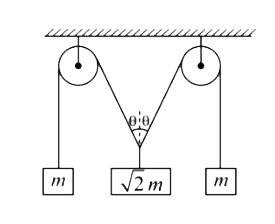For a spontaneous change to take place, the ΔS of the system should be ______ and ΔG of the system should be_______ .
To determine the conditions for a spontaneous change in a system, we need to analyze the concepts of entropy (ΔS) and Gibbs free energy (ΔG).
1. Understanding Spontaneity:
- A spontaneous change is one that occurs without needing to be driven by an external force. It is often associated with an increase in disorder or randomness in a system.
2. Entropy Change (ΔS):
- Entropy (ΔS) is a measure of the disorder or randomness of a system. For a process to be spontaneous, the entropy of the system must increase.
- Therefore, we can conclude that ΔS should be positive.
3. Gibbs Free Energy Change (ΔG):
- Gibbs free energy (ΔG) is a thermodynamic potential that can be used to predict whether a process will occur spontaneously at constant temperature and pressure.
- For a process to be spontaneous, the change in Gibbs free energy must be negative.
- Therefore, we can conclude that ΔG should be negative.
4. Final Statement:
- For a spontaneous change to take place, the ΔS of the system should be positive and the ΔG of the system should be negative.
Summary:
- ΔS > 0 (Entropy should increase)
- ΔG < 0 (Gibbs free energy should decrease)
- A spontaneous change is one that occurs without needing to be driven by an external force. It is often associated with an increase in disorder or randomness in a system.
- Entropy (ΔS) is a measure of the disorder or randomness of a system. For a process to be spontaneous, the entropy of the system must increase.
- Therefore, we can conclude that ΔS should be positive.
- Gibbs free energy (ΔG) is a thermodynamic potential that can be used to predict whether a process will occur spontaneously at constant temperature and pressure.
- For a process to be spontaneous, the change in Gibbs free energy must be negative.
- Therefore, we can conclude that ΔG should be negative.
- For a spontaneous change to take place, the ΔS of the system should be positive and the ΔG of the system should be negative.
- ΔS > 0 (Entropy should increase)
- ΔG < 0 (Gibbs free energy should decrease)
Topper's Solved these Questions
- SAMPLE PAPER 2012BOOK - ICSECHAPTER - SAMPLE PAPER 2012EXERCISE - PART-II (SECTION-A)
19 Videos
- SAMPLE PAPER 2012BOOK - ICSECHAPTER - SAMPLE PAPER 2012EXERCISE - PART-II (SECTION-B)
16 Videos
- SAMPLE PAPER 2011BOOK - ICSECHAPTER - SAMPLE PAPER 2011EXERCISE - PART-II(SECTION-B)
36 Videos
- SAMPLE PAPER 2013BOOK - ICSECHAPTER - SAMPLE PAPER 2013EXERCISE - PART-II (SECTION-C)
17 Videos
Similar Questions
Knowledge Check
In a spontaneous reaction, the free energy of a system :
AincreasesBdecreasesCremains unchangedDbecomes equal to zerothe speed of light c, gravitational constant G, and Planck’s constant h are taken as the fundamental units in a system. The dimension of time in this new system should be,
AG1/2h1/2C−5/2BG1/2h1/2C1/2CG1/2h1/2C−3/2DG1/2h1/2C1/2
In a spontaneous irreversible process the total entropy of the system and surroundings
View SolutionFor a gaseous system find change in internal energy if the heat supplied to the system is 50 J and work done by the system is 16 J.
View SolutionFor a gaseous system find change in internal energy if the heat supplied to the system is 50 J and work done by the system is 16 J.
View SolutionThe pulley and strings shown in the figure are smooth and of negligible mass. For the system to remain in equilibrium, the angle θ should be:

View SolutionFor a cell to work spontaneously which of the following options should be correct?
View SolutionWhen freezing of a liquid takes place in a system it:
View Solution

